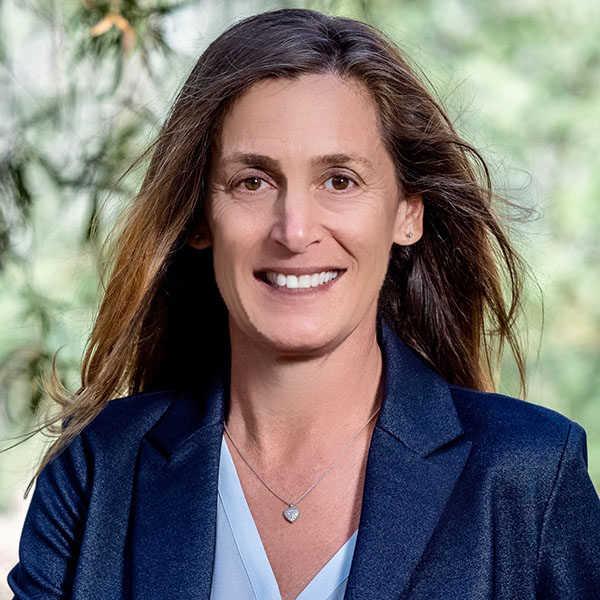The opportunity cost of conservation

Colombia possesses a unique geography and natural beauty as the only South American country with combined coastlines of the Pacific Ocean and Caribbean Seas. Human actions now threaten the only freshwater species of its kind, the pink river dolphin. A new ASU-led study developed a prioritization map that permits policymakers to target conservation actions toward regions where conservation benefits are the highest and economic impacts are low — giving the biggest ecological bang for the buck. Image courtesy Creative Commons
In 2019, a landmark report gave the world its first report card on biodiversity loss. There was one crystal clear conclusion: Human actions threaten more species with global extinction than ever before.
According to the IPBES (Intergovernmental Science-Policy Platform on Biodiversity and Ecosystem Services) report, currently 25%, or 1 million species, are threatened with extinction. The drivers of change have only accelerated in the past 50 years. The human population has doubled to 8 billion, contributing to climate change, land and sea-use change, overexploitation of resources and pollution. Two-thirds of the oceans are impacted. Eighty-five percent of wetlands have been lost.
As a result of these stark data findings, the IPBES agreement fingered human land-use changes as the primary culprit.
Now, an ASU research team has developed the first-of-its-kind study that combines conservation with practical economic tools for a case study of Colombia, South America, a high-priority but underfunded country for biodiversity conservation.
“We focused on the case study of the country of Colombia to demonstrate an approach to maximize the biodiversity benefits from limited conservation funding while ensuring that landowners maintain economic returns equivalent to agriculture,” said Leah Gerber, who was lead author of the IPBES report, and is a professor of conservation science in the School of Life Sciences and founding director of the Center for Biodiversity Outcomes at Arizona State University.
While they found that Colombia would need to substantially increase its conservation spending, the study developed a prioritization map that permits policymakers to target conservation actions toward regions where conservation benefits are the highest and economic impacts are low — giving the biggest ecological bang for the buck.
To do so, Gerber teamed up with Colombia native Camila Guerrero-Pineda, who, just three years ago, left her home country to join ASU and be mentored as a graduate student by Gerber and Gwen Iacona, assistant research professor at the School of Life Sciences, to ultimately make a difference back home.
“It’s fair to categorize that Colombia is a megadiverse country,” Guerrero-Pineda said. “It arguably has some of the greatest biodiversity in the world, given its size, and a lot of scientists and academics in Colombia fear the ecological consequences of human actions.”
Now, she is a first-year ASU School of Life Sciences and Conservation Innovation Lab graduate student and the first author on a paper detailing their results in the prestigious journal Nature Sustainability.
Cattle, coca and biodiversity
Colombia native Camila Guerrero-Pineda.
Colombia ranks among one of just 17 megadiverse countries in the world.
Colombia possesses a unique geography and natural beauty as the only South American country with combined coastlines of the Pacific Ocean and Caribbean Seas, along with the Sierra Nevada de Santa Marta, which at 13,000 meters, is the world’s highest coastal mountain range.
Human actions now threaten the only freshwater species of its kind, the pink river dolphin.
Also, the cotton-top tamarin; the Orinoco crocodile; the 100-pound, giant capybara rodent; the spectacled bear; plants (flor de mayo orchid); amphibians (golden poison frog); and butterflies (Colombian eighty-eight): all unique species to Colombia. And all could vanish.
In the South American continent, Colombia stands out as a region that has retained its biodiversity, one of the few silver linings due to a long history of violent, human conflicts. Prior to a 2016 peace agreement, Colombia had government instability and a decades-long guerrilla war led by the Revolutionary Armed Forces of Colombia, or FARC, and other minor groups.
“FARC had a lot of control over the forests, and it prevented a lot of economic development,” Guerrero-Pineda said.
Since FARC controlled the forest for coca leaf (the plant used to produce cocaine) production and the drug trade to finance five decades of asymmetrical warfare, one effect was to prevent unbridled development — and inadvertently preserve biodiversity.
In the ASU-led study, they found that the probability of transformation to cattle and other crops decreases with distance to roads, while the probability of transformation to coca increases. These results suggest that coca crops are grown in more isolated areas, away from roads, compared with cattle.
The presence of FARC was the most influential variable determining the fate of the deforested area, as the odds of forest conversion to coca crops over conversion to cattle or other crops in areas with presence of FARC is 308.04% higher than the odds in areas without FARC.
“It also prevented a lot of scientific monitoring because scientists were afraid of going into the forests,” Guerrero-Pineda said.
But Colombia now stands at a biodiversity crossroads. The 2016 peace agreement has now brought unprecedented development. During the past five years alone, GDP growth has been 5–6% every year.
During that time, the deforestation rate rose by 44% after the peace agreement. Palm oil production, logging, mining and gas oil extraction are some of the leading culprits besides agriculture development.
Do nothing, and Gerber’s team estimates the current biodiversity loss rate could increase by 50% by 2033.
Paradise lost or opportunity cost?
Leah Gerber
But how does Colombia preserve its biodiversity while balancing the need for economic development? Gerber’s team thinks they found a new blueprint to not only aid Colombia, but also extend to other policymakers in other countries to help make a difference.
For the first time, they applied a unique quantitative model that relates conservation investment to national biodiversity outcomes.
“The methods developed here offer an approach to identifying areas of greatest conservation returns on investment by balancing cost of conservation action, measured as opportunity cost for agriculture, and biodiversity impacts,” Guerrero-Pineda said.
When it comes to development, everything economically comes down to opportunity costs.
An extreme example of the choices nations must make is often referred to as the “guns versus butter” model of economics. It refers to whether a country is more interested in spending money on war or feeding their people — but it can’t do both, and there are always going to be tradeoffs.
In Colombia’s case, it's economic development versus biodiversity outcomes. Or more colloquially, parks versus parking lots. Preservation versus development.
Their team modeled the opportunity cost of conservation to agriculture as an approximation of the expected cost of compensating a landowner for avoiding conversion of their property.
“Opportunity cost is what you're missing out on or what you're not doing because of a decision to do something else,” Guerrero-Pineda said. “What that means is that someone is not going to be able to use the land that is going to be used for conservation.”
They assumed in the modeling of a protection cost that deforestation can be counteracted by compensating the landowner, either by purchase, such as the setting the sale value of a parcel equal to its expected future cash flow, or as continued payments for ecosystem services.
To avoid this additional biodiversity loss, Gerber’s groups estimated that Colombia would have to invest $37–39 million USD annually in the best and worst-case scenarios of deforestation. According to them, this means an increase in its conservation spending of $7.69–10.16 million USD per year. Avoiding this decline (preventing further loss) would require $61–63 million USD annually, which is more than twice the conservation spending before the peace agreement.
“Our strategy for targeting conservation funding involves first identifying regions with a high risk of forest conversion to agriculture (such as cattle ranching or other crops),” Gerber said.
“More broadly, the research agenda is around incorporating cost into decision-making to achieve the most outcomes, given limited resources.”
They found that the Andean region contains the highest mean opportunity cost of conservation, reflecting a very strong probability of agricultural conversion of the remaining forests. Following closely behind were the Pacific, the Caribbean and the Orinoquía regions. The Amazon region, the one with the lowest mean probability of agricultural conversion, had the greatest forest cover percentage and the greatest forest area, had a much lower opportunity cost of conservation.
“One of the things we're excited about with this work is that it's a demonstration of the potential of this idea of using return on investment for thinking about allocated conservation resources,” Iacona said. “And so, we took these two high profile approaches that are out there, called the Waldron Model and the Species Threat Abatement and Restoration (STAR) metric, and we put them together so country-level decision-makers can make the best-informed decisions at that type of scale.”
Their results can also assist in the planning of land preservation and national parks. In Colombia, the National Natural Park System is working to declare five new protected areas, and to expand three more. This builds on evidence showing that more effective and lasting conservation outcomes are achieved when governance empowers local communities and support their environmental stewardship, including indigenous communities, reserves and Afro-Colombian lands.
More to come
“I think Camila’s work really sets us up to assist entities, whether they be countries or companies, in quantitatively measuring the impact of conservation interventions on different metrics, whether they need biodiversity or climate mitigation, or other types of conservation strategies,” Gerber said. “I'm optimistic that we'll be able to build and scale this to improve conservation outcomes more generally.”
“Camila, for example, in the summer, will be working on a collaborative USAID project with Conservation International in Peru, and we're going to be applying a similar approach to identify green economic growth pathways.”
Their approach is another prime example of ASU’s commitment to advance research to finding practical solutions for today's urgent social, economic and environmental challenges.
“So, in that sense, Camila’s foundational work is not only novel, but also represents a practical foundation for broad applications globally,” Gerber said. “We're exploring applications in several other countries and for additional sustainable development goals. By coupling this work with market-based incentives, this work offers to rapidly accelerate our ability to achieve sustainable development goals.”
More Science and technology

New study uncovers another role for the cerebellum, offering clues about autism
There is a window of time, a critical period, during infancy and early childhood when the brain learns how to process information…

A cereal-box-sized space telescope heads for the stars
A small space telescope roughly the size of a family cereal box — having cleared its pre-shipment review by NASA last spring — is…

Hidden viruses thrive in desert wildlife
As the sun rises over the Sonoran Desert, bright green lovebirds gather noisily around backyard feeders. At dusk in the Arizona…



